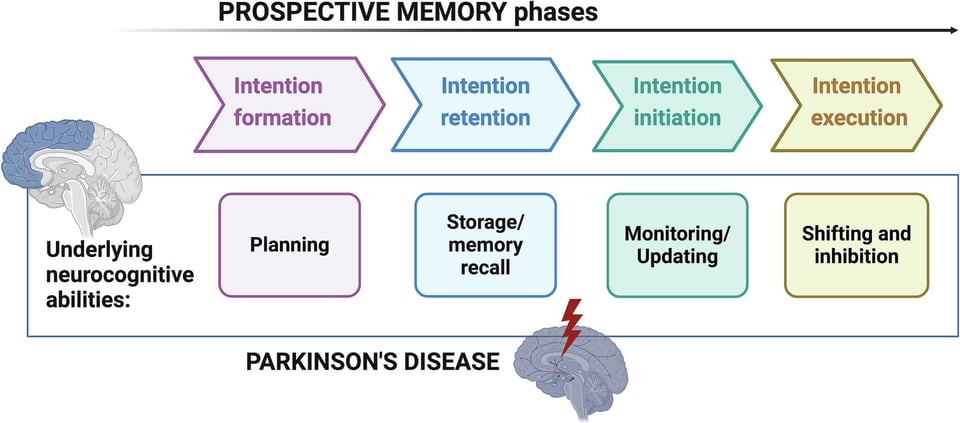Research Roundup (#22)
.png/:/rs=w:1440,h:1440)
Welcome...
Welcome to the twenty-second-ever Research Roundup! A weekly catch-up on the latest developments in the field of XR research.
It’s been a busy week, so let's not hang around.
The Week in 3 (Sentences)
- New research on presence and embodiment found frontoparietal regions of the brain support embodiment while temporoparietal areas mediate presence with a hierarchy suggested between the two, whilst testing of four presence questionnaires across five scenarios revealed sensitivity of the measures might depend on context.
- Studies on cognitive assessment and training established normative data for the Nesplora Ice Cream executive function test (n=419), whilst a 4-week VR programme improved Parkinson's patients' memory and inhibition abilities.
- And finally, user interface research investigated the trade-offs between preference, precision, and cognitive load when using different gaze-based selection methods, whilst security researchers demonstrated how deceptive UI elements could manipulate social VR users into harmful actions.
The Week in 300 (words)
Two of the defining factors of the VR experience are embodiment and presence. Within VR embodiment is of course the feeling of owning a virtual body, and (spatial) presence the feeling of being there in the virtual location. Researchers have already suggested that these two phenomena are associated with distinct areas of the brain. New research published this week took this further and looked at how the two areas may interact. They first manipulated perceptions of presence and embodiment whilst participants used a HMD (a Vive Pro). They then transferred this methodology to participants being scanned with fMRI. The data not only identified two discrete regions but suggested that they were activated in a hierarchical way with embodiment activated prior to presence. The biggest limitation here is that the participants in the fMRI weren’t using a HMD, and were completing the same tasks on a laptop instead. How much we can infer from one to the other is unclear but the authors argue that this provides preliminary evidence of how the two concepts might be related at a neuronal level.

Good news this week as evidence suggests that VR based cognitive training could be beneficial for individual’s with Parkinson’s disease. The 4-week intervention specifically targeted prospective memory, which is remembering to do things in the future (such as taking medication, attending an appointment, or taking food out of the oven). The intervention involved regularly completing tasks designed to improve the cognitive skills of planning, shifting and updating. Importantly, this was a double-blind randomised control trial so the results could be usefully compared to a similar group undertaking a control intervention (an active placebo group). Comparison of pre- and post-training measures clearly indicated that the VR training led to improvements in prospective memory and executive functioning in the experimental group. As is often the case, this involved a small sample and was exploratory but it is an exciting and positive finding nonetheless.
And finally, researchers in South Korea this week shared a preprint in which they manipulated the user interface in VRChat to see if participants would engage in harmful actions. They tested out four approaches exploiting the spatial nature of VR. The first, Object Clickjacking, involved having benign and malicious objects occupy the same space such that the malicious object is activated unintentionally and sends the user to inappropriate content. Denial-of-Raycasting involved blocking user interactions using invisible objects to create the sense that the controller is not working and then redirect them to malicious content when trying to fix it. Object-in-the-Middle involved exfiltrating sensitive information like passwords by placing invisible objects over virtual keypads. And, Avatar Quishing involved deceiving users with malicious QR codes hidden in avatars and displayed over legitimate ones. Unfortunately, the attacks were effective over 80% of the time in each case. Fortunately the authors have proposed a way of scanning for these malicious activities (Metascanner). I'm not sure I dare follow the link.
Paper of the Week
Here at the Research Roundup we have a weird little fascination with height in VR. From feeling too tall and lumbering about like a giant, to inadvertently being half the size we should be, we’ve had plenty of experiences where height inconsistences have changed our behaviour.
We are always happy then to see new data where people manipulate height and see what happens. Our first experience of such studies was this rather wonderful piece from 2014 in which height was manipulated to induce paranoia by making people shorter. This week it was the slightly more positive making people taller to improve their perceptions of public speaking.
Participants in this study were tasked with mentally preparing a speech in VR about why they are the perfect candidate for their dream job. They then had to deliver the speech to three avatars, their virtual evaluation committee, before completing evaluations of their performance including perceptions of themselves.
As you might predict, participants who were made to feel taller were less likely to endorse negative statements about themselves, and evaluated their performance more positively. Sadly no objective measures of actual performance are reported, but at least it is clear that participants felt good about themselves!
Further evidence then that height in VR matters. Part of what makes it such a fascinating variable is that it can often be ignored, or varied unintentionally. However, if designing an application for positive behavioural change it may well be worth making someone just a couple of inches taller than they normally are. Strap on some virtual platform shoes and feel the change in confidence, and perhaps even performance?